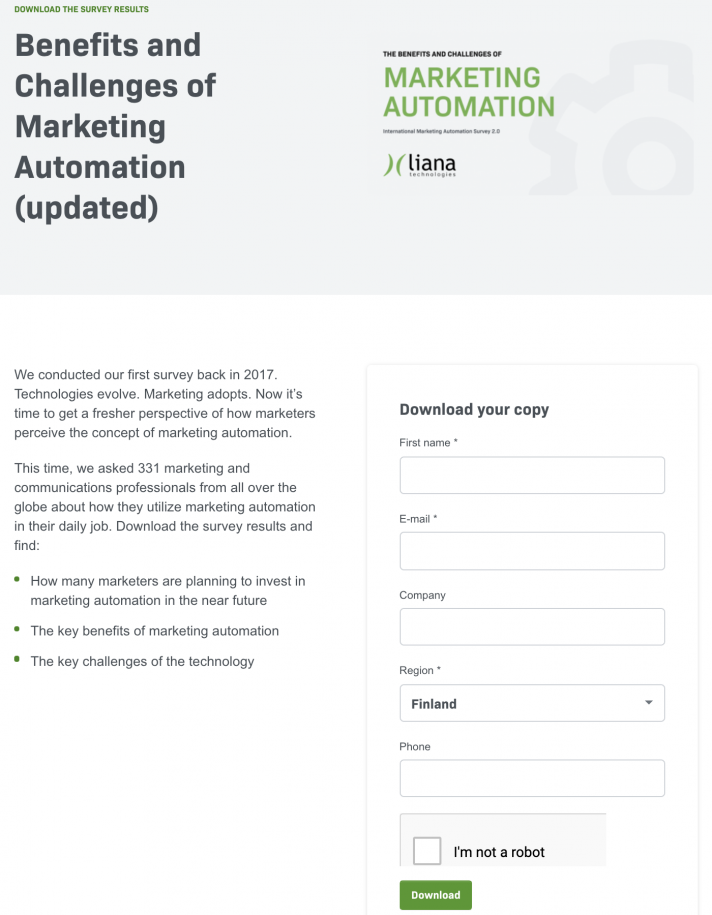Marketing automation has the potential to be a huge aid to those working in digital marketing. However, the lack of expertise or know-how is usually the biggest challenge in utilizing automation in the initial stages. Nearly half of the respondents to Liana Technologies' 2020 International Marketing Automation Survey said that starting with marketing automation may be hindered because of these factors.
The case might be that marketing professionals just don't know where and how to start. If you feel a part of this group, you are in the right place reading this. In this article, we introduce the very basic steps of marketing automation that get you on the right track quickly, yet efficiently. Let's start with some very important basics and move on to concrete automation examples.
Customer Identification
In digital marketing, it's impossible to wear out the topic "customer identification". The more data you have about the customer, the more accurate messages you can send them, and the better the communication will also be.
The phrase "customer lifecycle" is also closely related to identifying the customer. This means the whole journey a person takes with a company – from the initial "I've heard this name before" to possibly decades of loyal customership.
Identification is vital when it comes to the customer lifecycle. It is very important for your organization that a customer gives their consent for your organization to perform marketing actions towards them throughout the customer lifecycle. If you lack their consent, you are stuck at the beginning of the lifecycle and must settle for lighter marketing efforts.
Light marketing efforts when there is no personal data about the customer are, for example:
- Following Google Analytics – you can monitor the traffic on your site
- Using Leadfeeder – you can track from which domains your site visitors are coming from
- Utilizing Hotjar – you get to see how your visitors are moving on your site and with this information, you can modify your site in a way that makes people identify themselves
- Based on the information above, you can run Google Ads
However, all of this is like looking for a needle in a haystack compared to the possibilities of marketing automation. For example, if the goal is to get lead management to a level that person x would be willing to buy in the future, then a marketing automation system is pretty much a mandatory companion for your business.
Marketing Automation Usage
We are getting closer to what you came here to read. When you have a situation at hand that a person has given their consent for marketing, the possibilities of marketing automation are nearly endless. But as promised, we hold your hand and start with baby steps:
Recurring marketing activities
If you take a close look at your actions when it comes to marketing, you are bound to notice some actions that are repeatedly performed manually. This could be a message that you send to all new customers or members. Or this repeated action is a newsletter that contains current events or news. Both of these examples are very easy to automate. You do the manual labor just once and automation takes care of the rest.
Nurturing leads
A website visitor cannot really be called a warm lead by any means but someone who has downloaded a guide from your site has shown a deeper interest in your organization.
Recognize the customer's needs and use Segmentation
A guide download could indeed be the first step in your automation chain and the rest of the chain will take its course according to the customer's interests. From the automation path, an individual customer can be transferred to different segments based on which messages they open and which links they click.
Onboarding (customers or employees)
Different kinds of onboardings and orientation weeks are fertile ground for automation. Automation chains provide useful information for customers about the service they've acquired and this naturally deepens the customer relationship. The customer gets valuable information and the experience that they are taken care of and appreciated. The same thing can be applied to a new employee as well. In the automated messages, you can share the practices within the organization, present the management and colleagues and share pearls of wisdom.
In addition to these, you can monitor the behavior of website leads and customers. Automations also include landing pages for lead identification.
Practical Examples
1. Know your customers-to-be
It is possible to build newsletter subscription pages to include targeting information. You can add checkboxes for interests or other selections that make segmentation easier for you. Once your customers-to-be have given some vital information to you, you can divide them into segments that will be sent targeted newsletters via automation.
This type of automation is very easy to implement and can literally blow up your open and click-through rates.
2. Welcome a new newsletter subscriber
When you get a new newsletter subscriber, the message chain for this brand new person should most definitely be automated. You can first thank the new subscriber with special offers, then segment the recipients according to their behavior, and then modify the content of the following messages based on the data you have gotten. In other words, you form groups of the recipients according to what they are most likely to buy. These formed groups can later be used as target groups for manually sent messages.
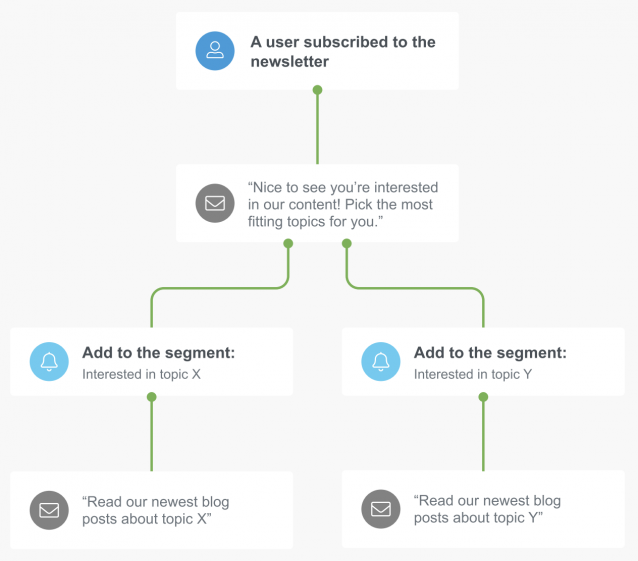
3. Automate content
One of the most time-saving and nerve-preserving features of basic automation is automating newsletter content. By automating content, you ensure that your deliveries contain up-to-date information only. In practice, the content is added into the newsletter by using different kinds of RSS feeds. The feed can be, for example:
- Future events
- News
- Social media feed
- Most popular products
- Ads
- Customer references
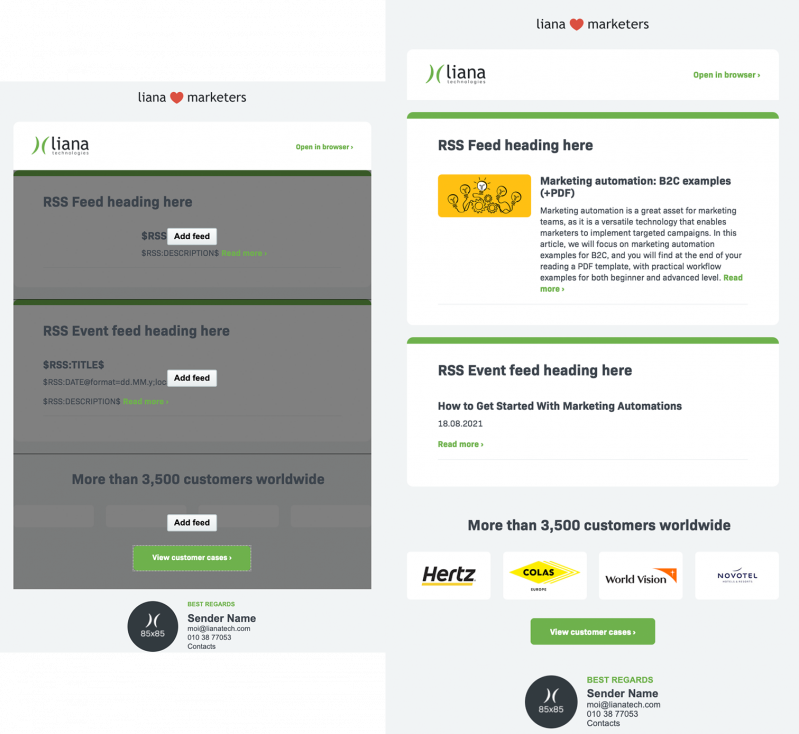
4. Guide download
The so-called lead magnets are a great target for a well-built but simple automation chain. Lead magnets can be, for example:
- Guides
- Instructions
- Training
- Webinar recordings
When you provide gripping content for your audience, put it behind identification. With high-quality content, you make sure that the recipient gets something valuable in exchange for their personal data. It is possible to target messages based on behavior in these types of chains as well.
Liana Technologies' 2020 International Marketing Automation Survey results were published as a downloadable guide. If you want to hear the thoughts of 331 marketing professionals on automation, you can download the guide here.
5. Onboarding
Onboarding is a very fruitful ground for automation. With onboarding messages, you can easily ensure that all your new customers have the exact same information about your services or products. Onboarding automation can be set to last a whole year, for example, or a shorter period, such as a few weeks or some months.
In the onboarding automation chain, you can also promote services in the messages that your customers are most likely to be interested in next. You can personalize messages based on this data as well.
6. Onboarding a new employee
Even though marketing automation literally suggests it deals with marketing, it can be used just the same for communications purposes. For example, a part of new employee onboarding and orientation can be handled with automated messages.
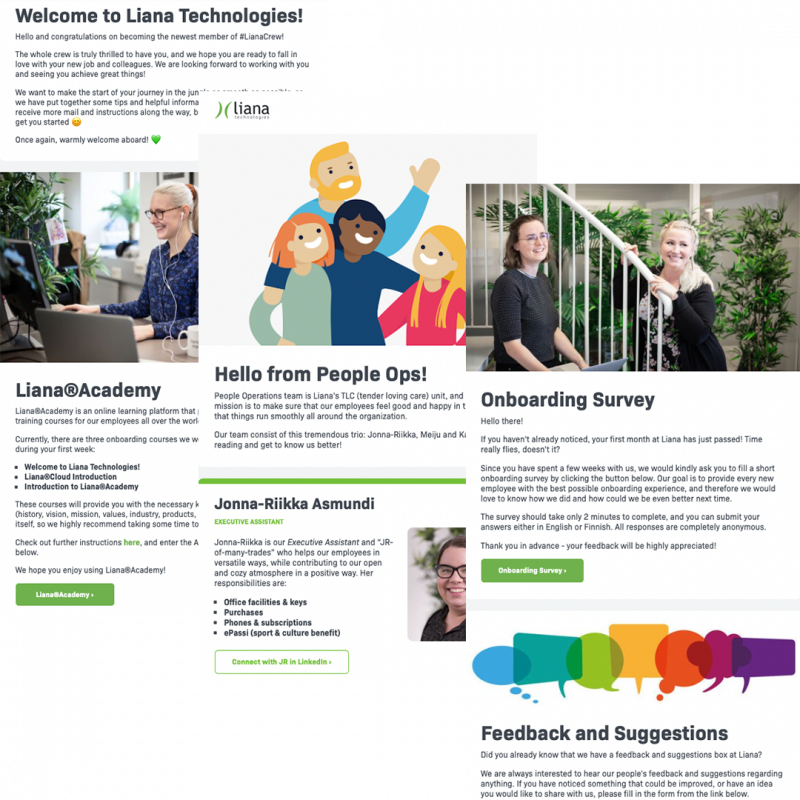
No integrations to other systems are needed and the trigger to start the automation is filling out a form. However, messages can be built as RSS feeds from intranet data, for example.
7. Help your customer with their product or service
In the course of big and long projects, automation can be used to send checklists, for instance, to remind customers about an upcoming launch. In these cases, it's not necessary to think about the entire customer lifecycle but instead, focus on the big project at hand and its smooth sailing.
An example could be an impending website launch and we want to make sure that our customers take into account all the important things to secure a timely launch.
8. Utilizing cross-selling drip campaigns
It makes sense to send cross-selling drip campaigns utilizing marketing automation. All you need is a customer list or a specific segment to which targeted messages are sent as an automation chain, offering other products or services related to their previous purchase history.
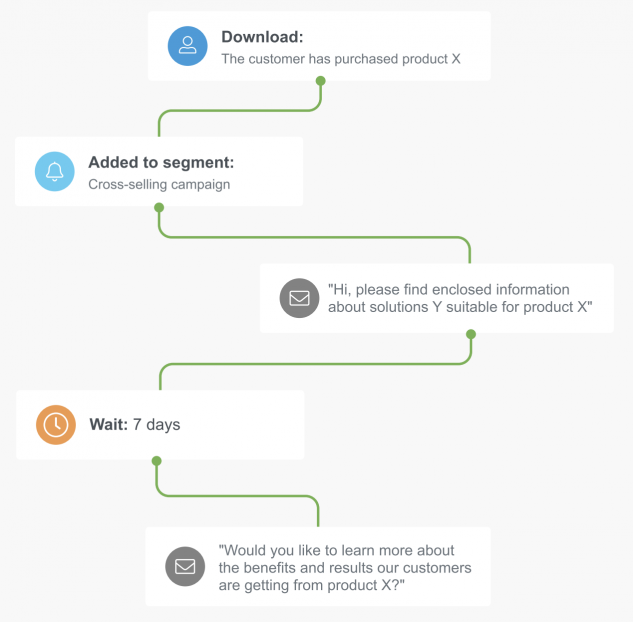
This kind of chain or drip campaign could be around 4-5 messages long. By the end of it, it's very clear which people on the mailing list show interest in the products or services that are promoted in the drip campaign.
9. Webinar communications
Webinar or event communications can be nearly fully automated, including all of these messages:
- Invitations
- Reminder for non-registrants
- Reminder for registrants a day before
- Reminder for registrants 2h before
- Webinar recording
- Followup communications based on the recipient's behavior
- Automatic notification of potential customers to the customer manager
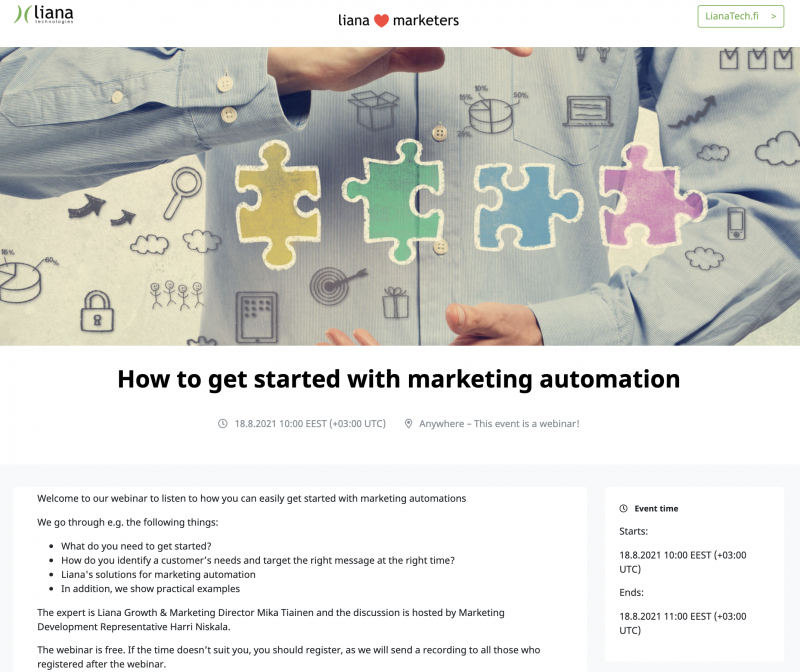
Adding content to the automation chain is a one-time thing, after which the automation takes care of sending messages to the right people at the right time. The old event automation chain can also always be used as a basis for new event automations.
10. Integrations
All the examples from one through eight have been ones that have no integration at all, i.e. the start of automation is based on filling in a form or an uploaded list. In the ninth example, there is an integration between the automation system and event management tool Eventilla. However, integrations provide an endless amount of opportunities for the use of automation.
One opportunity, for instance, is an integration between a CRM system and an automation platform.
Automations enable you to quickly solve different kinds of challenges or issues in the company. In addition to solving challenges, the possibilities of marketing automation are:
- Creating leads
- Advancing sales
- Creating additional value to customers and engaging them
- Decreasing support requests
- Decreasing churn
It's a good idea to extend the discussion about marketing automation beyond further than just the marketing team and ask, for example, sales, the product team, or even support, how automation could help them. How would you put the relevant data to work through automation?
A small recap of how you can quickly and easily utilize marketing automation:
- New newsletter subscribers
- New customers
- New employees
- Cross-selling campaigns
- RSS feeds
- Birthday messages
- Event automations
What could you do with a little help from automation?
Discuss with our marketing automation experts and together we can find how you will benefit the most from marketing automation.

